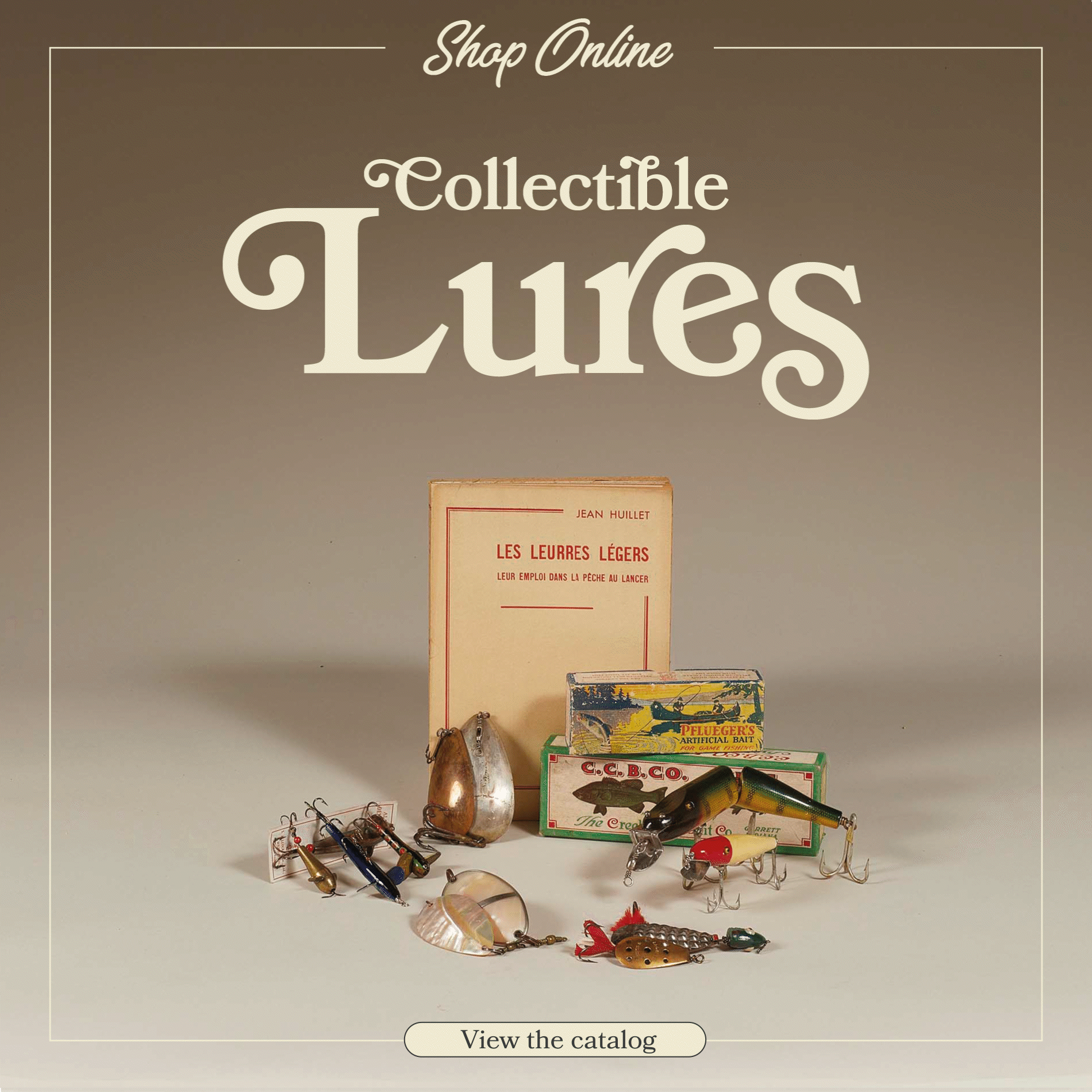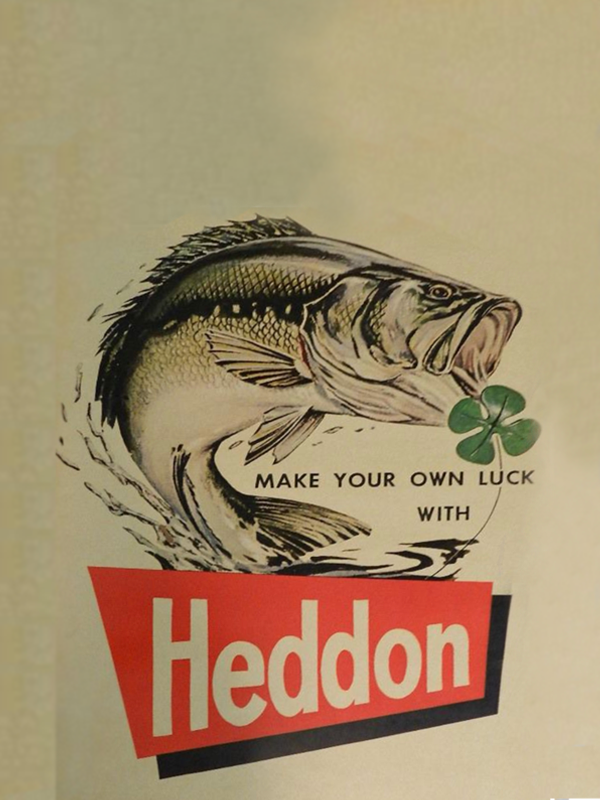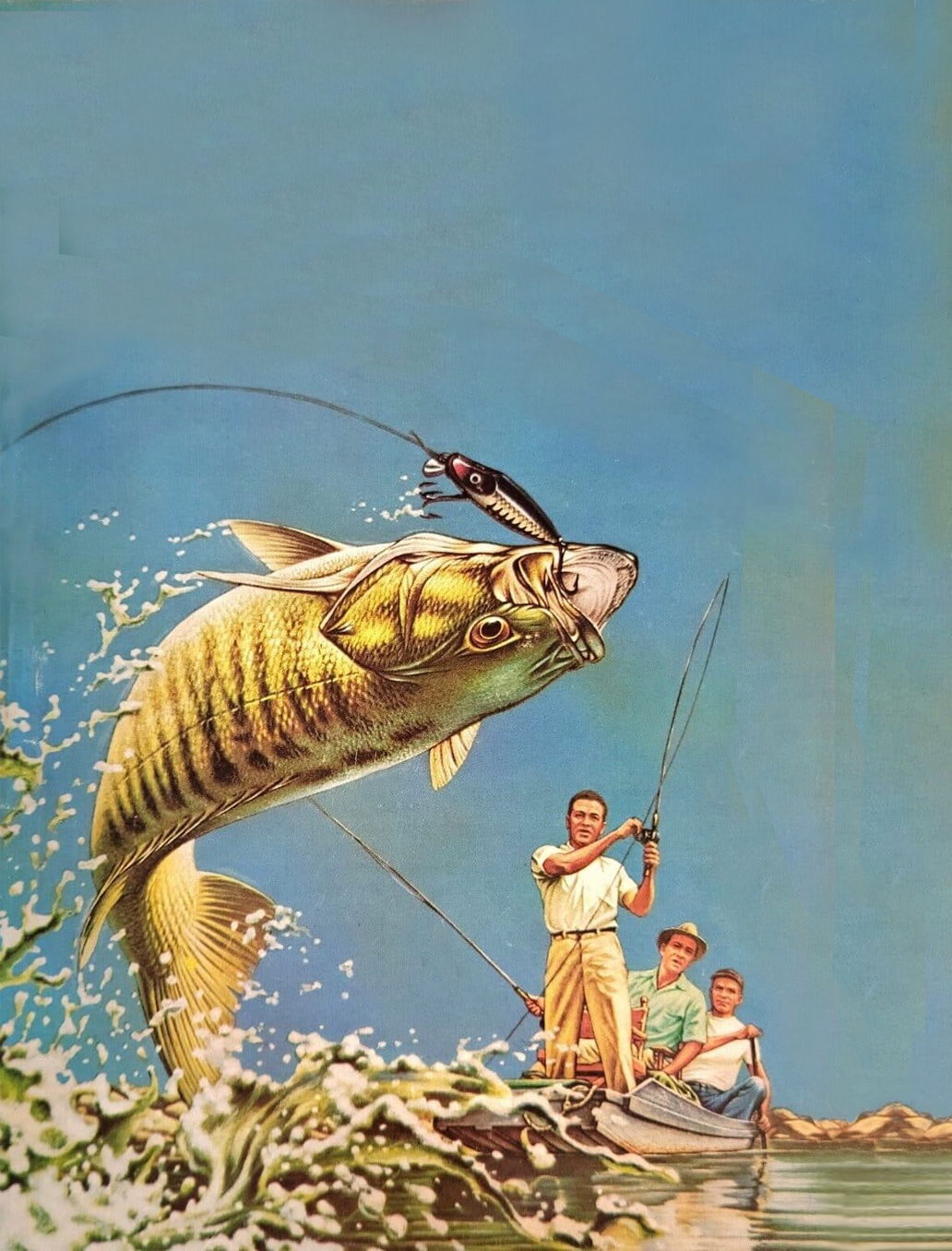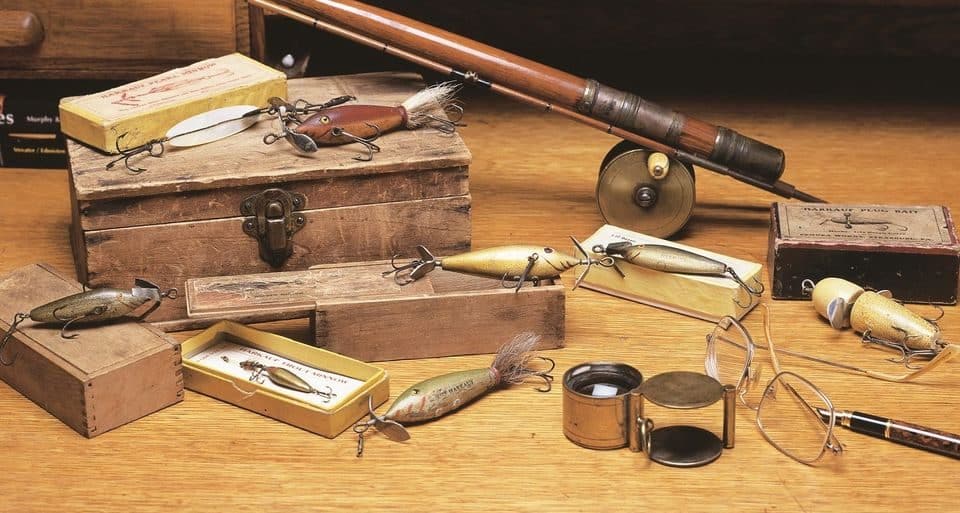
Collectible lures
Collectible lures

If the old reels, fly or casting are eminently collectible, because easy to display on shelves or better in a showcase, the lures of the past, by their multitude of manufacture are just as much.

André Meulnart the father of the famous MEPPS spoon.
If the “devons” were still used by the salmon fishermen in the heavy casting, until the 60’s, when these fishes were still abundant in Brittany, in the Gaves or in the Allier, as far as the trout, the perch or the pike are concerned, they have been completely supplanted since then by the undulating spoons and especially the spinners.
The spinning spoon: leaded under the paddle, is still the universal trout lure used in all waters, in all weathers, by millions of anglers all over the world and it still catches trout.
The first one: the famous Mepps (acronym for Manufacture d’Engins de Précision pour la Pêche Sportive) Aglia, whose blade has been used all over the world and whose imitations are countless, is still the favorite of trout anglers. It was in 1938 that Mr. Meulnart, a French engineer specialized in mechanical engineering in the automotive industry and fisherman, registered the patent for the brand.
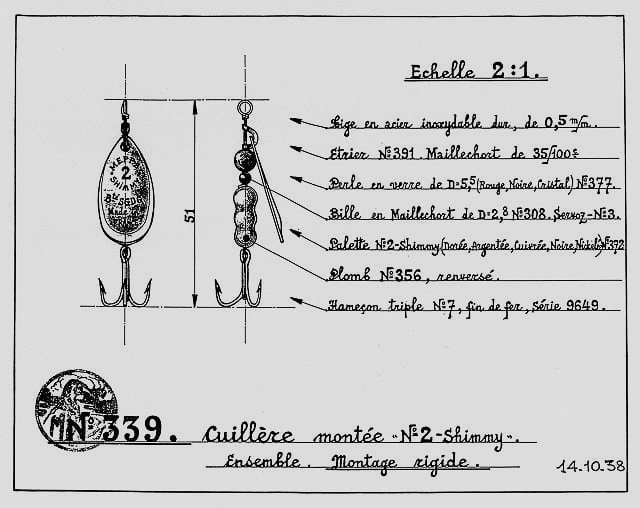
Plan for one of the industrial patents, registered in 1938, of the Mepps "Shimmy" n°2, first spoon leaded under the blade and no longer in the head.
Spinners.
Mepps spoons have certainly been responsible in our country for the capture of more trout than all other brands and models of spoons combined. The Aglia, whose blade turns at 60° to the axis, causes strong pulsations responsible for the flickering effect.
As a result, it “pulls” quite hard on the retrieve and fishes rather on the surface, which makes it the ideal spoon for streams and small rivers where trout when active are posted in the first ten centimeters of the liquid layer.
For this type of fishing, which is very much like hunting, precision in casting the spoon is of primary importance.
A good angler must be able to cast his lure at ten or twelve meters in a plate and especially to make this one start as soon as it touched the water.
The other forms of paddles, more elongated, willow leaf, type C.P. Swing or Aglia long, turning at about 30 ° of inclination in relation to the axis, draw less at the end of a line and therefore tend to fish more hollow, which is more suitable in large or medium rivers.
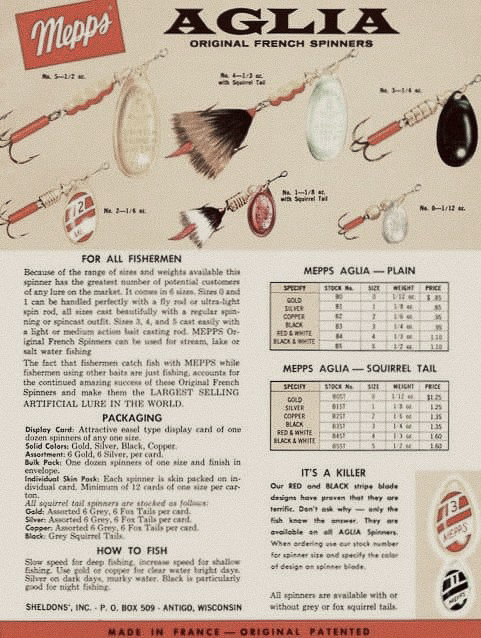
Renamed "Aglia" for the American market, Mepps spoons, in various sizes, have sold, and continue to sell, millions of units in countries around the world.
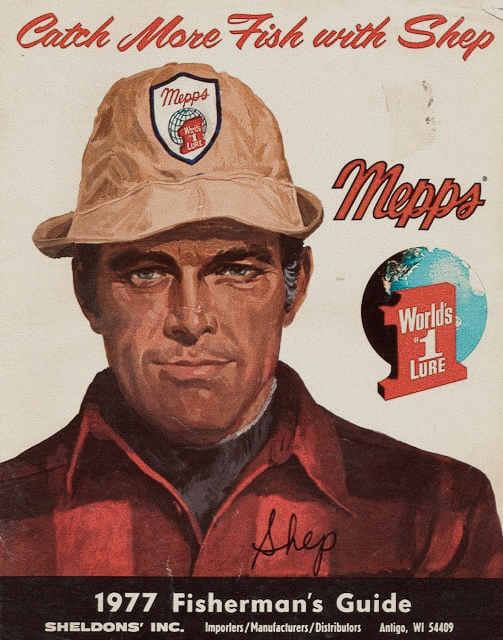
In 1977, the Sheldon Company, distributor of Mepps in North America, could legitimately proclaim that its metal spoons were the most used lures by anglers worldwide.
Short history of the spinning
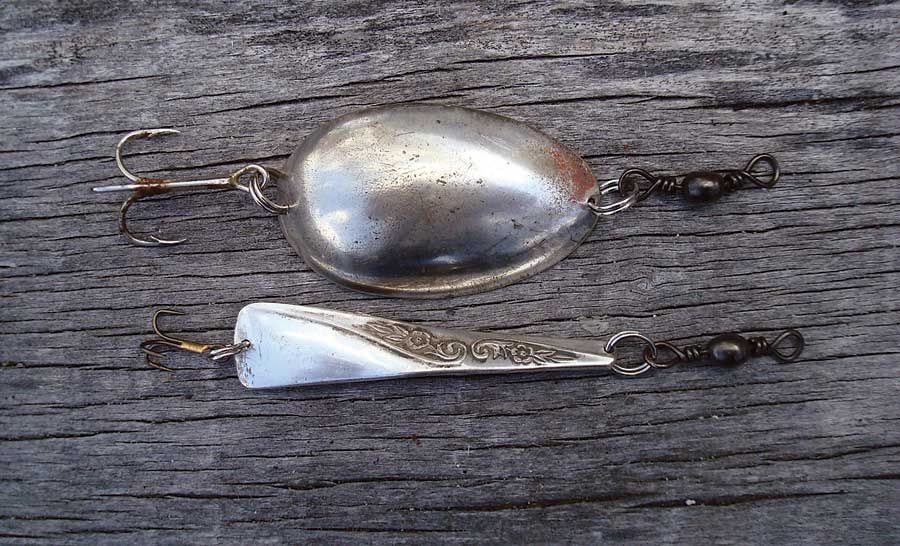
With a silver or stainless steel table spoon, you can, as in this picture, easily make two rippling spoons.
Spoon fishing is not new and like many other fishing techniques, was certainly invented in England. Legend has it that a fisherman’s wife, accompanying her husband in a boat on a lake, inadvertently dropped a silver picnic spoon over the side of the boat, and a pike caught it as it sank to the bottom.
In France, this method of fishing is mentioned for the first time by Charles de Massas in his famous book “Le pêcheur à la mouche artificielle et à toutes lignes“, published in 1859 in Paris. “We had just had lunch and the Norman gloria was blazing in our cups. You see this small spoon, said my friend while presenting me the one he had just used to stir his coffee. Well! with it I will make you catch perch and pike. Only it will be necessary to remove its handle and to drill two small holes, one at the top, the other at the bottom, at its two ends. I had never heard of such an instrument, and incredulity even more than astonishment was painted on my face. I am not joking, said my friend, and to convince you of this, here is a spoon that has been sent to me from England, a country where this type of fishing is practiced everywhere. My friend mounted his reel line and fitted the leader that carried the spoon. Thanks to its shape and the resistance it offered to the water, the spoon turned with extreme speed, even in dead water. After a few strokes, mostly to wet the line, he went on and caught eleven perch, plus a three-pound pike.”

Contrary to spinners, wobblers have never been as attractive as they should have been to anglers during the period 1940-1980. It is enough to see how little space was devoted to them in the catalogs or advertisements of specialized magazines.
Only a small number of salmon fishermen used, and even then only on large rivers such as the Gave or the Allier, heavy undulating lines (Eira, Orkla) or light lines leaded at a distance (Vigouroux, Cybelle…). Pike fishermen, wrongly, used them very little, preferring spinners or swimming fish.
Only sea bass fishermen, casting from the shore or trolling, used heavy undulators dedicated to the marine environment, like the famous Yann, Snack or Caussel.
The forgotten stars of the 40’s and 50’s
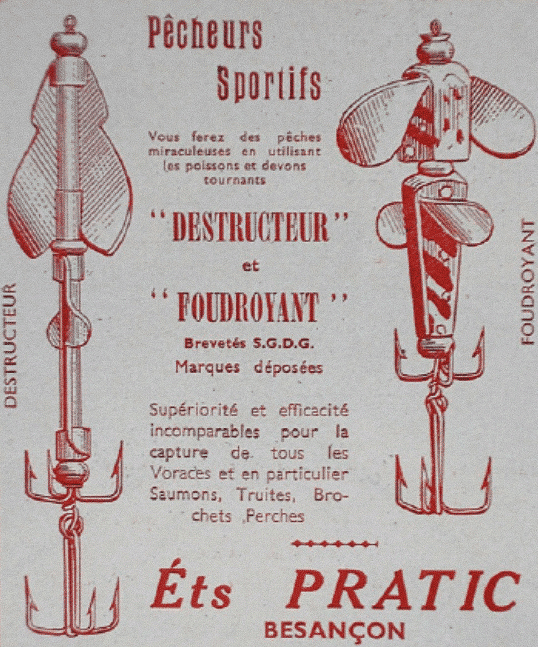
The Destroyer and Foudroyant must, are today very sought after by the collectors of old lures.
This period was extremely fertile for the fishing of carnivorous fish in our country. The invention of the fixed drum, which was to revolutionize casting, was accompanied by an unprecedented creativity in terms of lures and especially spinners.
Dozens of brands and hundreds of models were created and many of them had only a short-lived glory. The advertisements of the time praising the merits of this or that brand make us smile today, as well as the names of these spoons.
Let’s mention in no particular order: the “Pirate” and the “Torpedo” from Wyers, the “Cyclone” and the “Éclair” from Ancre d’Or, the “Rafle” from Perrot, the “Valse”, the “Tourbillon”, the “Swing”, whose names alone make us dizzy. The “Terrifying”, the “Foudroyante”, the “Terrible” and the “Redoutable” sowed terror among fish in the depths of our rivers and ponds, long before the French Navy used the same names for our nuclear attack submarines.
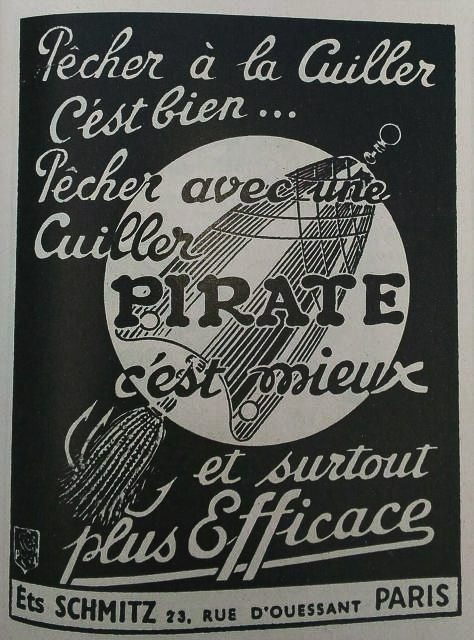
The names, like here the Pirate, on the ads of the spoons, are always very evocative of efficiency.

The Haskell Minnow, named after its inventor, was patented in 1859 in the United States. It was made in a very realistic way, in a hollow copper alloy, with a rotating tail in the shape of a propeller. In November 2003, in an auction, a specimen was acquired for $101,200.00...an absolute record for a metallic lure.
Tassel or not tassel?
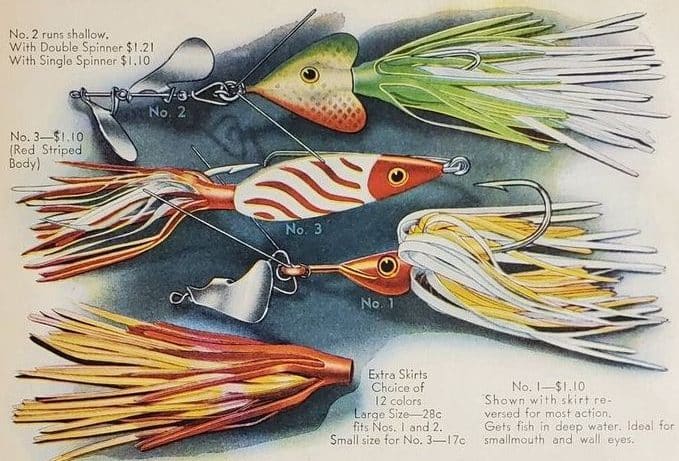
The wool "tassels" are replaced on the more modern lures, by skirts of rubber straps or soft plastic material.
From the end of the last century, the American spoons presented in the Manufrance catalog, or from other companies, are equipped with a triple embellished with either a “red wool pompom” or a “colored feather covering, generally of the red Ibis”, a bird that is now protected.
Very quickly the French manufacturers will be inspired by this custom, and will equip their spoons with the famous red wool pompon. The models of Tourbillon and Suissex, especially intended for the pike and the perch, are indissociable of this pompom.
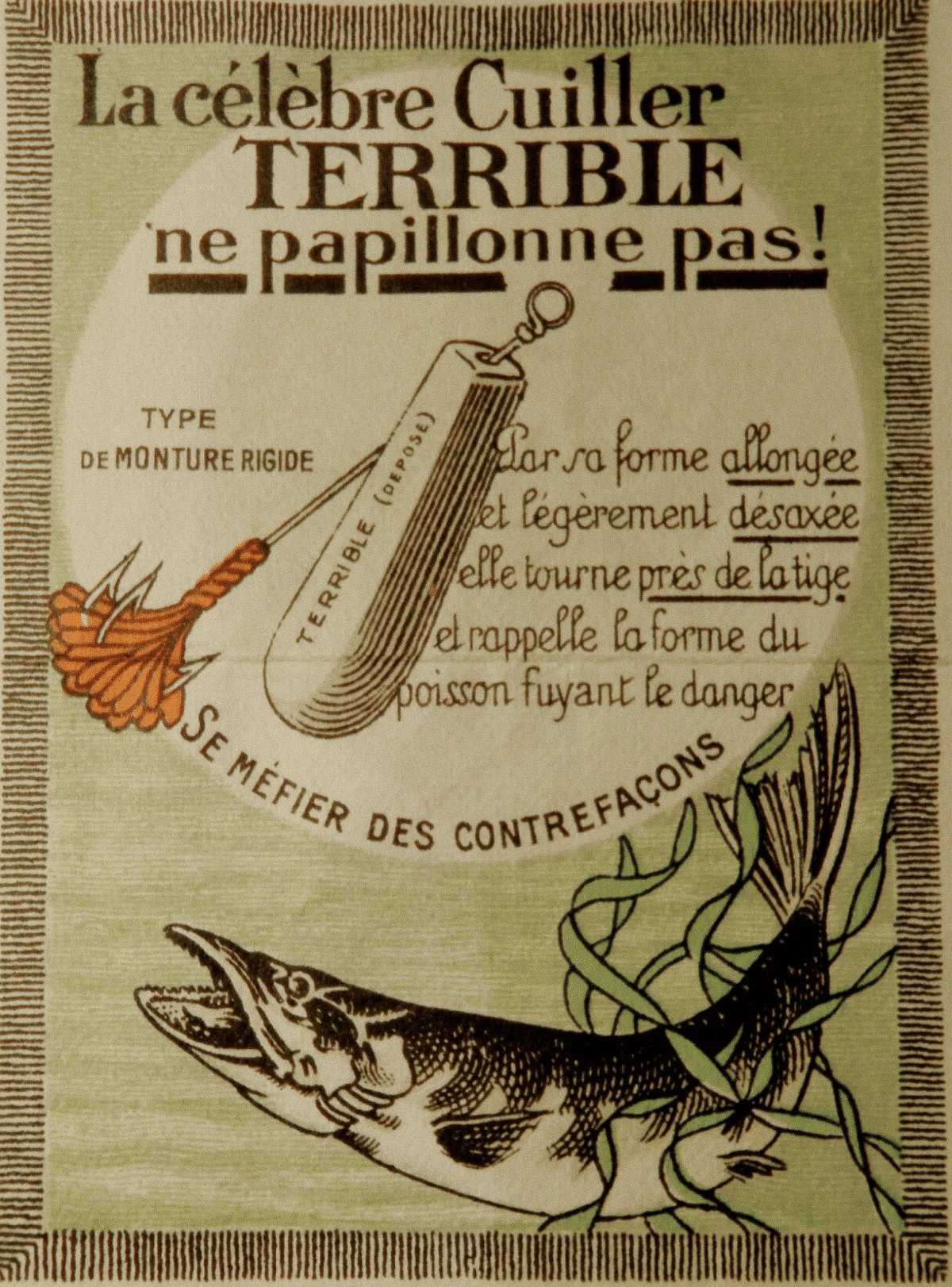
The pre-war Terrible spoon was equipped with a real red wool pompon.


